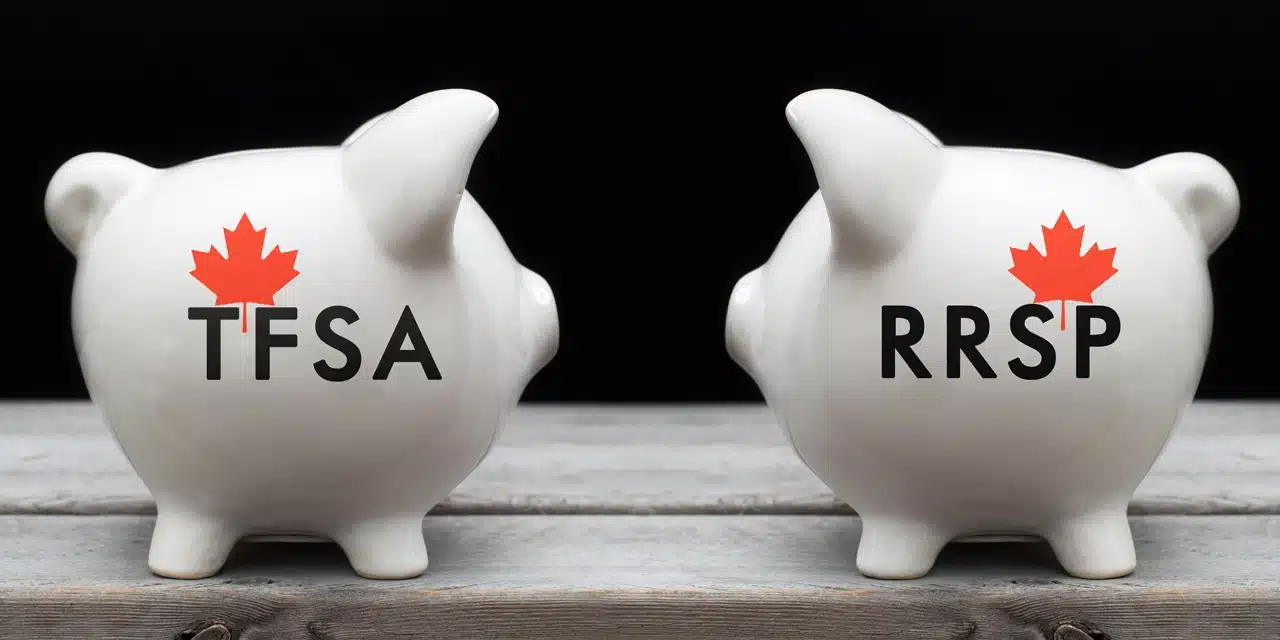Exchange-traded funds (ETFs) are popular among DIY investors, thanks to their cost efficiency (compared to mutual funds), convenience, liquidity, and in some cases for their built-in diversification, and automatic rebalancing.
For newcomers to ETF investing, choosing the right ETF from the extensive array of options can appear challenging. Nevertheless, with the proper knowledge at your disposal, you can navigate this landscape with confidence and make informed decisions tailored to your investment goals.
Understanding ETFs: A Primer
An ETF, or exchange-traded fund, is a pooled investment with shares bought and sold on a stock exchange. Unlike traditional mutual funds, ETFs offer unique benefits such as intraday trading and exposure to a diverse range of assets.
ETFs can include stocks, bonds, commodities or a mixture of these. The largest ETFs still tend to be extremely low-cost funds that passively track a broad stock or bond market index.
A more recent investing trend, sector-specific and thematic ETFs have exploded on the scene, giving investors more options to build their ETF portfolio. These products can track any sector, industry or asset type, from blockchain technology to clean energy and healthcare.
Choosing the Right ETF: A Step-by-Step Approach
With more than 1,300 ETFs now available in Canada, it’s easy to see how investors can suffer from analysis paralysis when it comes to choosing the right products for their needs and goals. Selecting the right ETF involves a systematic approach to align your investment choices with your financial goals.
Here’s a step-by-step guide:
1. Define Your Investment Goals and Risk Tolerance
Before you start hunting for products to build your portfolio, take a step back and assess your capacity to endure market volatility. Be honest about your risk comfort level.
Consider questions like what’s your age, time horizon and investing experience? Are you a conservative, moderate or growth-oriented investor? How comfortable are you with short-term price fluctuations? Are you looking for income or total returns?
This exercise will help you determine an appropriate asset mix between stocks and bonds.
2. Determine Your ETF Investment Strategy
Next, begin by identifying your financial goals and objectives:
-
- Decide whether you seek growth, income, or a mix of both
- Assess your risk tolerance to determine your comfort level with risk
- Determine investment approach: active, passive, covered call or sector specific strategy
Choose the approach that aligns best with your investment goals, risk tolerance, and desired level of involvement in managing your portfolio.
Key terms to be aware of:
-
- Passive ETFs are investment funds designed to track the performance of a specific market index or benchmark. They aim to replicate the returns of the underlying index by holding a portfolio of securities that closely matches the index’s composition. Indexes can vary in scope; they can be broad, such as the S&P 500, offering comprehensive market exposure, or they can be more thematic or sector-specific. For instance, the Harvest Global Gold Giants Index ETF is an equally weighted portfolio of the world’s leading and largest gold companies. This ETF tracks the Solactive Global Gold Giants Index TR.
- Active ETFs are investment funds that are actively managed by professional portfolio managers or teams. Unlike passive ETFs, which aim to replicate the performance of a specific market index, active ETFs involve active decision-making about which securities to buy and sell within the ETF’s portfolio. At Harvest ETFs, our Income ETFs take an active approach to their stock selection process and employ covered call option strategies to enhance returns. Decision making is handled by an experienced investment team, which actively manages the assets within the ETF, making informed decisions about what to buy or sell in order to optimize returns.
- Rules Based – or Factor Based ETFs use a quantitative rules-based approach to select and weight its portfolio holdings based on specific investment factors or characteristics rather than market capitalization.
Some investors adopt a mixed approach, often referred to as “core and explore.” In this strategy, they allocate the majority of their funds into a passively managed ETF for example, while taking a more active approach with a smaller portion of their portfolio.
3. Focus on Key ETF Characteristics
A. Expense Ratios and Fees
Keep an eye on expense ratios, as these fees are factored into your total return calculation. It’s also important to note that total returns may vary from year to year. Generally, ETFs have lower expense ratios compared to mutual funds. While costs aren’t the only consideration, they should be part of your evaluation, especially when comparing similar funds.
B. Diversification
Diversification is a cornerstone of smart investing. American economist and Nobel Prize winner Harry Markowitz said: “Diversification is known as the only free lunch in investing.” Whether you are looking for a broad sector ETF, or a sector-specific one, prioritize ETFs that provide exposure to a range of assets, sectors, and geographic regions, each with different drivers. By holding a selection of diverse assets in a single ETF, the ETF manager aims to improve returns while decreasing risk.
C. Tracking Error
Tracking error is a concept to understand with ETFs. Tracking error measures how closely an ETF’s returns follow its benchmark index. It’s common for an ETF’s performance to lag the returns of its benchmark index due to management fees as well as GST and HST. But there are other factors that may cause an ETF’s returns to veer from its benchmark. This can include currency hedging, holding too much cash and sampling error (caused by not holding all the underlying securities in the index).
4. Factors of Lesser Importance
A. ETF Price
Unlike individual stocks, an ETF’s price isn’t the most important factor. Focus on the ETF’s net asset value (NAV), which represents its underlying holdings’ total value divided by the number of shares or units in circulation. It’s not the same as looking at the price of an individual stock and wondering if it’s over- or undervalued.
When comparing similar funds, it makes no difference if one trades at $53 per unit and the other trades at $26 per unit. The unit price (i.e., the trading price per unit) does not inherently reflect the ETF’s performance or suitability. What matters most is the ETF’s total return performance, which includes factors like fees, dividends, distribution pay out and capital gains. Assessing the total return performance provides a more accurate picture of how the fund has historically performed and how it aligns with your investment objectives.
B. Trading Volume and Liquidity
Some ETFs have higher trading volume than others. This has led to a persistent myth that ETFs with low trading volumes have poor liquidity. The concern is that investors won’t be able to buy or sell a “thinly traded” ETF when they want to. But ETFs don’t work that way. A unique feature of ETFs is that their supply is flexible—units can be created or redeemed as needed based on demand.
That’s why ETF liquidity is not an issue in the same way it is for stocks and mutual funds. With ETFs, it’s the liquidity of the underlying asset that matters, not the ETF itself. So, if your ETF holds Tesla stock, you count the liquidity of Tesla and not the ETF.
Conversely, an ETF with higher trading volumes tend to have more efficient markets and tighter bid-ask spreads (lower transaction costs), which can be factored into total return. Also, ETFs with healthy trading volumes often instill greater confidence as it suggests a more widely accepted and used investment idea.
Crafting Your ETF Portfolio
By following this comprehensive guide, you can strategically build an ETF portfolio that aligns with your investment objectives and risk tolerance. Remember, due diligence and research are key. Evaluate each ETF’s characteristics, fees, and performance history to ensure they fit within your broader investment strategy. As you embark on your ETF investing journey, leverage these insights to help confidently navigate the world of ETFs and construct a portfolio that reflects your financial aspirations.
To discover how your clients can benefit from this strategy, please get in touch with the Sales Team for your region, here.
For more on Harvest Income ETFs click here.












